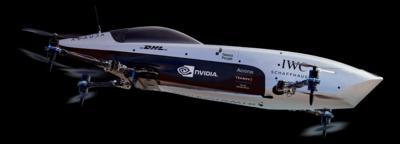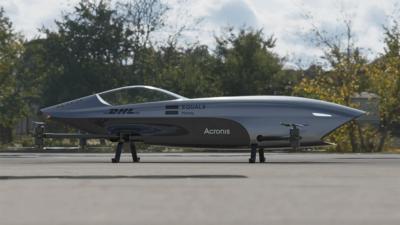The Sprint of Progress
The invention of the automobile in the late 19th Century liberated humankind from the tyranny of distance and time, and changed forever the eyes with which man gazed upon an Earth over which his cleverness had granted him awesome and terrible agency. More importantly, the advent of the motorcar heralded the rise of motorsports, and introduced humanity to the intoxication of speed.

More so than practical need or consumer demand, car racing hastened the evolution of the automobile from Benz’s Motorwagen and Ford’s Quadricycle to the former’s AMG One Hypercar and the latter’s GT.
Comes now 2022 and EXA, the electric flying-vehicle racing series that’s proving as powerful an inducement to the maturation of the emergent Advanced Air Mobility (AAM) sector as the Targa Florio was to the automotive industry over a century ago.
The notion of a human-piloted, flying-vehicle racing series was pioneered by Matt Pearson, whose company, Alauda Aeronautics, developed a prototype quad-copter eVTOL racer in a Sydney, Australia warehouse, and successfully flew the contraption in December 2017.
Pearson’s eVTOL racing aircraft have since been vastly improved upon, and form the basis of the EXA Series—which is currently developing the formula and format upon which future crewed eVTOL racing will be predicated.
In autumn 2022, history was made on the salt-flats of South Australia when Airspeeder pilot Zephatali Walsh beat fellow-competitor Fabio Tishcler in the frenetic, inaugural EXA remotely-piloted race. The race occasioned the first instance in which the two pilots were given license to press their 4.1-meter-long eVTOL machines to the utmost in a blade-to-blade, fully-competitive remote race setting.
The race took place over a one-kilometer digital sky-track, with the competition playing out in two sessions. The action was punctuated by rapid, battery-swap pit-stops that added a compelling strategic aspect to the event—much as tire and repair pit-stop stratagems impart nuance, complexity, and lively fan debate to Formula-1 automotive racing.
The South Australian round was the first of several EXA remotely piloted races that will serve as the developmental and feeder series for the fully-crewed Airspeeder Grand Prixs slated to get underway in 2024.

To support the historic first race, Alauda Aeronautics—the technical team that developed and manufactured the competing Speeders—built race and pilot control stations, 5G networks, Augmented Reality (AR) sky tracks, and engineering and team control stations akin to those seen in elite automotive motor racing. In addition, the Alauda Aeronautics crew—which comprises engineering talent from Ferrari, Boeing, Airbus, McLaren, Jaguar, Land Rover, and Rolls-Royce—devised race rules and a full suite of safety, logistical, and race management protocols.
The technology salient to the EXA series speaks to the future of Advanced Air Mobility, and provides a cogent preview of the digital, mechanical, and architectural infrastructures upon which near-future urban air mobility is apt to be based. What’s more, the technologies proven viable in EXA races will underpin future crewed racing, thereby contemporaneously driving a new form of motorsport and serving as a crucible in which eVTOL concerns may test and temper systems and vehicles with future, real-world passenger, cargo, and logistical applications.
 ANN's Daily Aero-Linx (05.06.25)
ANN's Daily Aero-Linx (05.06.25) ANN's Daily Aero-Term (05.06.25): Ultrahigh Frequency (UHF)
ANN's Daily Aero-Term (05.06.25): Ultrahigh Frequency (UHF) ANN FAQ: Q&A 101
ANN FAQ: Q&A 101 Classic Aero-TV: Virtual Reality Painting--PPG Leverages Technology for Training
Classic Aero-TV: Virtual Reality Painting--PPG Leverages Technology for Training Airborne 05.02.25: Joby Crewed Milestone, Diamond Club, Canadian Pilot Insurance
Airborne 05.02.25: Joby Crewed Milestone, Diamond Club, Canadian Pilot Insurance




